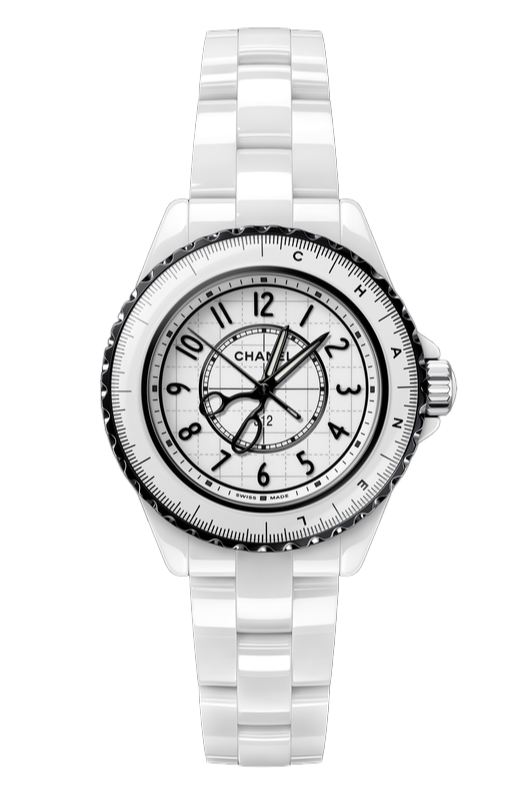Chanel tie-ups cement ambitions to be ‘very serious’ watch dial name

When design house Chanel announced that it had taken a 25 per cent stake in Swiss brand MB&F over the summer, it did a bit more than help preserve another independent watchmaker’s future. Having struck similar deals with independents such as Romain Gauthier and FP Journe, Chanel’s long-term strategy for three decades has been to establish itself as a serious actor in the watch industry.
The company, which is owned by the billionaire Wertheimer family and headquartered in London, already benefits from a significant distribution network and strong growth. Sales across the business reached $19.7bn last year, up 16 per cent against 2022 on a like-for-like basis, while operating profits rose 10.9 per cent to $6.4bn.
Its first foray into watchmaking came in 1987 with the Première, 16 years after the passing of founder Coco Chanel, whose fashion designs catapulted the brand to fame. According to Frédéric Grangié, president of Chanel watches and fine jewellery, there were two ways into watchmaking for a fashion brand in the 1980s.
“One was to treat a watch as essentially a fashion accessory and, at that time, most of the fashion brands went that way and signed licences,” he says. “But, from the very start, the idea of Chanel’s owners was to identify a manufacturer in Switzerland.” In 1993, Chanel bought Châtelain in La Chaux-de Fonds, which today employs around 500 staff.
“There was a very strong will to make sure that the design and the integrity of every single product in the watchmaking world at Chanel would be on par with the other products of the house,” says Grangié. “This was a very high ambition because, back then, Chanel was already the leader in fashion and in fragrance, and it controlled absolutely all aspects of the operations.”


Just how far Chanel was prepared to go became apparent when it launched the black ceramic J12 in 2000 and the white ceramic three years later.
In order to master the material, Chanel purchased a German company, Inmatec Technologies, a specialist in manufacturing customised ceramic feedstocks and ready-to-process granulates to make injection-moulded components for the automotive, aerospace, and domestic appliance industries.
“It’s a real industrial company,” says Grangié. “I guess most people wouldn’t go as far as buying a ceramics factory, but this was the best way to control the quality. It means we have a manufacturer that is really state-of-the-art, which we use for ourselves and for a number of other brands, providing cases and bracelets. I believe that we absolutely need to have that portfolio of partners to which we are suppliers, because we learn a lot from that.”
A similar motivation was behind Grangié’s decision in 2018 to acquire a 20 per cent stake in movement maker Kenissi.

“It was critical for us to be to be part owners of that manufacturer, and to make sure that we would be able to have those movements customised for Chanel, with the highest level of quality and durability,” he says.
Now that Chanel produces its own ceramic cases and bracelets, as well as owning part of the movement maker, Grangié feels justified in describing the current J12 as a true “manufacture watch”. In 2018, Chanel also bought 20 per cent of FP Journe, signalling its ambitions were not restricted to industrial production. This was not a total surprise, as the company had already invested in Roman Gauthier in 2011, as much for the component-making side of the business as the brand. The same pattern of acquiring a minority interest has now been repeated with MB&F.


This strategy gives the watchmakers financial security while still retaining independence. In MB&F’s case, while the financial terms of the deal have not been disclosed, founder Maximilian Büsser will own 60 per cent of the company, while Serge Kriknoff, who runs R&D and production, will own 15 per cent.
At the time of the deal, Büsser said that “in addition to allowing us to pursue our independent path, free of any pressure on growth, the investment by Chanel will strengthen our operations by providing access, when needed, to their wider ecosystem and network of specialised suppliers”.
As Chanel is a family-owned company, Grangié appreciates the value of independence. Businesses in which the fashion house invests retain their independence but give Chanel privileged access to their knowhow. “We would certainly not have been able to develop our portfolio of high complications without the initial work by Romain Gauthier — we now have seven movements in that portfolio,” Grangié explains. Similarly, the expertise of Les Cadraniers, FP Journe’s dialmaking company, has been tapped by Chanel to create, among others, the Mademoiselle Privé Pique-Aiguilles collection.


In the current market conditions, Grangié feels having the expertise of Romain Gauthier, FP Journe and MB&F at Chanel’s disposal gives its high watchmaking an edge. “They [all] have different qualities and different savoir-faire,” he says. “Each contributes very differently to the business: Romain with components; François-Paul [Journe] with dials; Max with a number of collaborative projects.” Grangié is quick to add that the contributions of each company are not limited to the areas he mentioned. “It is a way of working that fits into our architecture — how we see watchmaking today and, importantly, tomorrow.”
Grangié is now looking beyond challenging market conditions far into the future. “I consider that 20, 30, 40 years from now, Chanel has what it takes to be one of the very serious, successful watchmakers in Switzerland. It’s been a long journey, but by watchmaking standards, by Swiss brand standards, it’s very, very quick.
“In our business, particularly if you are the youngest on the block, which is our case in terms of watchmaking, it’s very important to be humble. But that doesn’t prevent you having high ambitions.”
#Chanel #tieups #cement #ambitions #watch #dial






